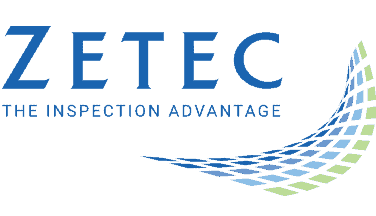Ensuring Above Ground Storage Tank Inspection Integrity Using NDT

Oil and gas are drilled and pumped from the depths of the earth during hydrocarbon exploration. Before these hydrocarbons are transported to various destinations around the world, they are stored above ground in storage tanks. Companies rely on the integrity of storage tanks to keep their assets protected from the elements. Hence, the importance of storage tank inspections.
Storage tank inspection integrity has grown in importance as oil and gas industry regulations have become stricter. The protection of resources, the environment, and reputation can all be crucial to a company’s bottom line.
To ensure this protection, it is critical that companies employ the most effective nondestructive testing (NDT) solutions to detect any flaws within the weld seams of storage tanks and to monitor corrosion. Even the tiniest flaw or instance of microscopic wear and tear can lead to costly issues. Storage tank inspection doesn’t have to be an effort that interrupts operations. Leveraging the proper NDT technology can ensure accuracy and efficiency.
Inspection Challenges in the Oil and Gas Industry
While pre-service storage tank inspection is conducted to ensure a storage tank’s integrity before entering a field. Inspection is especially important once a storage tank has been placed in service.
Above-ground storage tanks, like those used in both midstream and downstream operations, are especially vulnerable to wind, heat, cold temperatures, rain, and snow. They can be blasted with sand and subject to consistent erosive forces as hydrocarbons travel throughout. These challenges make routine inspection a necessity.
Each phase of operations within the oil and gas industry—upstream, midstream, and downstream—offers unique challenges for inspection technicians. This was especially true when technicians relied on more traditional methods for performing inspections. They were faced with conducting inspections despite challenges such as:
- irregular geometries of different equipment;
- large-scale operations;
- difficult-to-access areas (such as in midstream operations);
- equipment covering vast surfaces (such as pipeline); and
- exposure to harsh weather conditions.
The challenge in storage tank inspections is equaled by its importance. Even small amounts of damage, if left undetected, can turn into a costly problem. Leaks can lead to regulatory and compliance issues as well as cause operational challenges.
Without the right equipment, testing can be cumbersome and expensive, necessitating time and manpower can also be challenging. The solution to above-ground storage tank inspection integrity is flexible, durable equipment that can handle the rigors and challenges presented by the industry.
NDT Solutions for Weld Seams and Corrosion
NDT solutions for the oil and gas industry have come a long way. There are dedicated instruments for the challenges you may face and specific inspection technologies for detecting flaws.
Ultrasonic Testing for Weld Inspection
Ultrasonic (or ultrasound) testing induces a high-frequency wave from a transducer into a given material. This creates echoes that can be made into 3D images of the surface and subsurface. The visualization reveals cracks, damage, and flaws on the object. An inspection using ultrasonic testing can be done by manually running a transducer over the component (or attaching a scanning mechanism).
This capability is especially useful for weld inspection on storage tanks. Tanks, by their nature, have seams and welds at odd angles. Corners, rounded bodies, and more often present a challenge for most NDT equipment. Inspecting the weld efficiently requires the use of equipment that can adjust and be quickly calibrated for a new surface. With the assurance that the full volume of the weld is inspected.
The best NDT equipment is accurate, reliable, has a low initial investment cost, and improves productivity. It allows operators to quickly detect flaws, which allows for quicker repairs and less damage.
| For more information regarding NDT testing for weld inspection, read our white paper on Phased Array Ultrasound Testing on Austenitic Welds. |
NDT Testing for Corrosion Detection
Corrosion is likely the oil and gas industry’s biggest issue. Not only can corrosion occur due to the effects of wind, rain, cold weather, and hot temperatures, but the very material stored in the tanks are themselves corrosive. The processes of hydrogen embrittlement, the actions of carbonic acids, and precipitation of iron sulfides from the steel can all corrode a steel storage tank. Corrosion can quickly eat away at tanks, causing minute flaws that can turn into larger issues if undetected. To detect these flaws, technicians rely on corrosion mapping.
In addition to ultrasound testing, eddy current array (ECA) testing is very effective for surface and near-surface inspections. During eddy current testing, a magnetic field from a coil is induced into conductive material where anomalies in the material create changes to the eddy currents that are sensed for evaluation by specialized instrumentation. With the right eddy current testing instrument and probes, technicians can obtain a fast and accurate map of corroded areas.
Better Above Ground Storage Tank Inspections for the Oil and Gas Industry
Scalable NDT testing helps the oil and gas industry save time and increase accuracy. It is a powerful counterbalance to the forces of erosion and corrosion, a counterweight to the pressure that eats into weld seams.
Partnering with a team of experts who can find customized, flexible, and durable solutions for your storage tank inspection needs isn’t just a good response to a changing economic and regulatory climate; it’s a way to anticipate and thrive.
Zetec is a major provider of nondestructive testing of above-ground storage tanks for the oil and gas industry. Contact us today for access to the best equipment and the top solutions to protect your most valuable assets.
